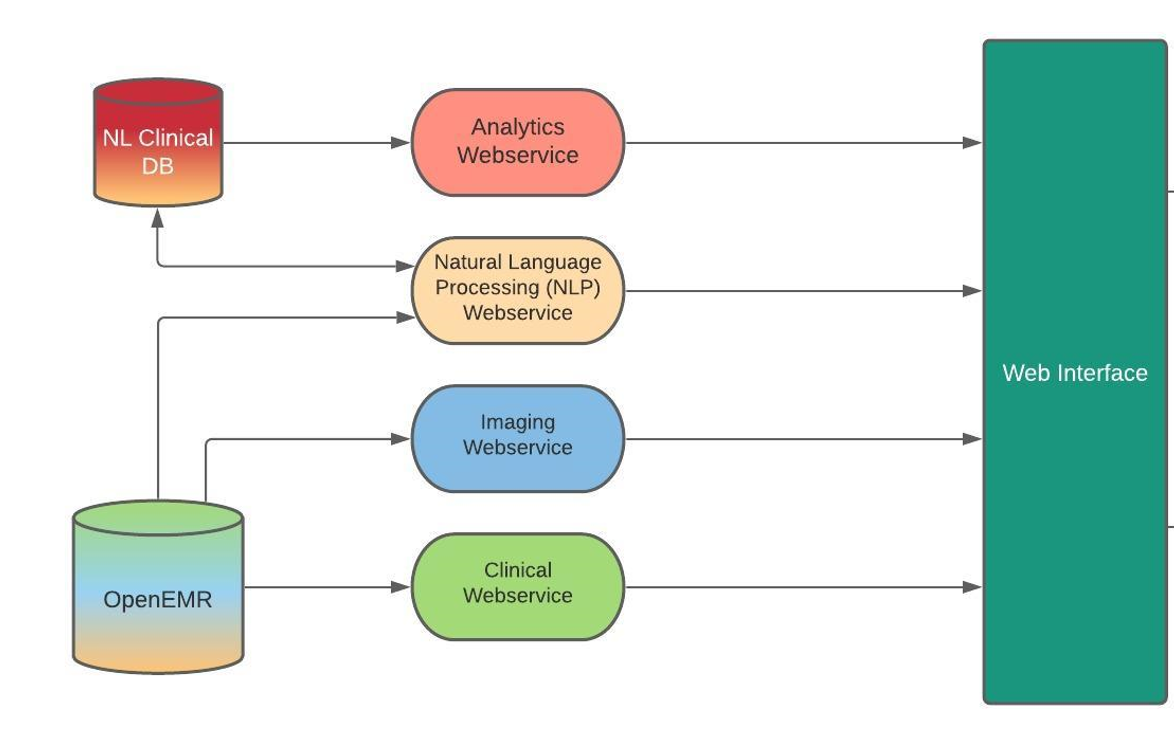
Figure 1

Figure 2

Team 2
Team Members |
Faculty Advisor |
John Stachura |
Dong-Guk Shin Sponsor UConn Computer Science & Engineering Department |
sponsored by

SmartEMR is a web-based application designed to empower doctors, nurses, and other healthcare professionals to gain better insights into stored electronic medical records, or EMRs. SmartEMR leverages powerful machine learning tools to provide analysis on key free-form data types, including clinical notes and medical images. The system is implemented through a microservice architecture and exposed to the user through a secure web interface. The frontend for SmartEMR is built from the ground up for usability, security, and scalability. The site uses a simple tab-based navigation scheme to access various data analysis services, minimizing the learning curve for users to begin analyzing their patient data. The first of the system’s microservices is a natural language processing service. The service is mainly accessed via the SmartQuery engine, which prompts the user for plain-English input queries and converts them to formalized SQL statements that are then executed and displayed. In addition, the service can tokenize, or parse, key prescription information from free text. The key function of the analytics web service is to create insightful data visualizations from plain-English queries. This service works in tandem with the natural language processing service to create the user-experience present in the SmartQuery engine. The imaging microservice is responsible for storing, updating, classifying, and returning relevant medical images. The site uses several established endpoints to allow for the uploading of medical images to new or existing patient profiles, to query images using natural language, and to classify medical images and return their relevant descriptors. The final microservice in the SmartEMR architecture is a clinical web service designed to generate sophisticated sample patient data. The service uses an algorithmic data creation scheme designed to produce extremely realistic patient histories that use genetics to predict physical attributes.
